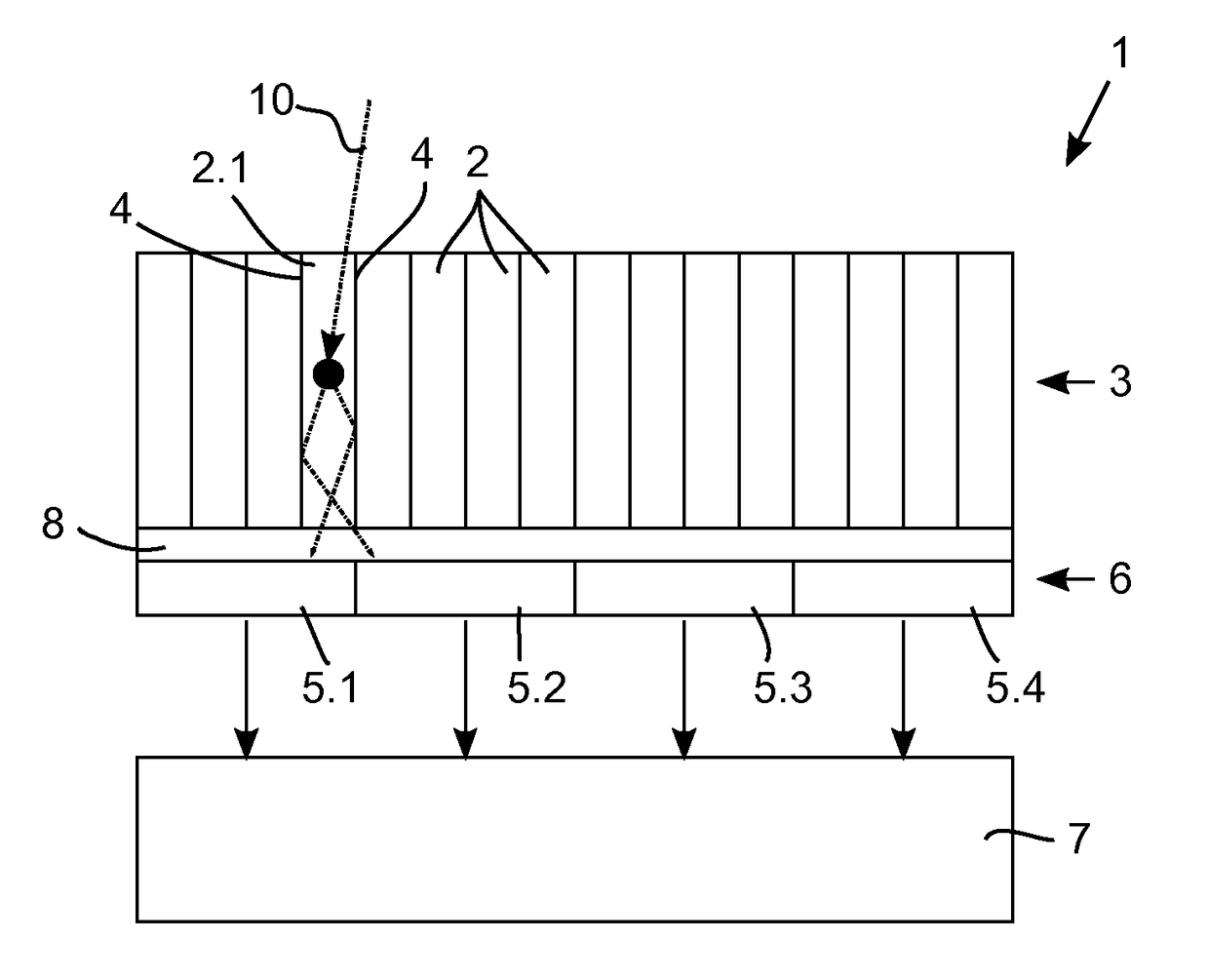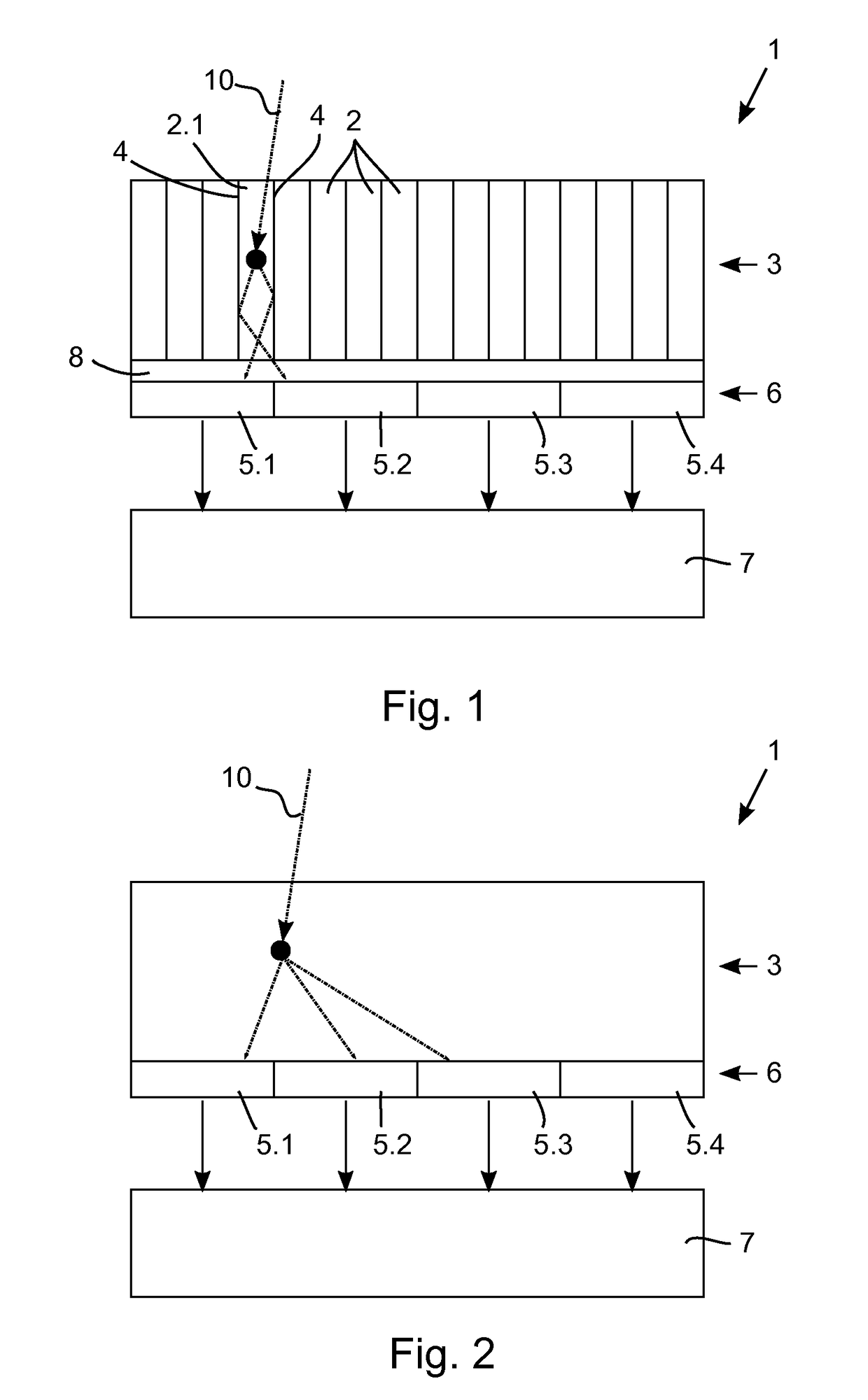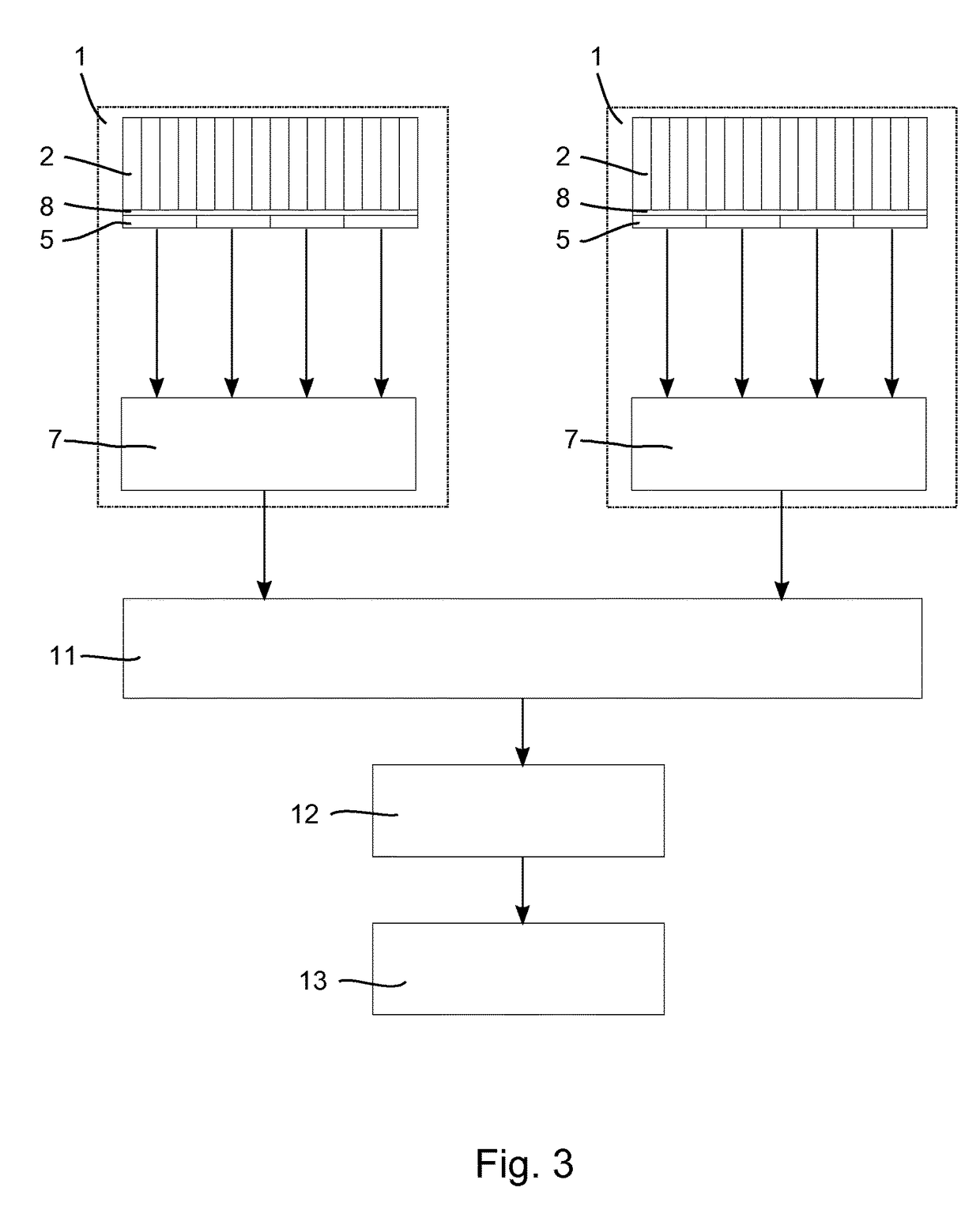Scintillation event position determination in a radiation particle detector
a radiation particle and event position technology, applied in the field of radiation particle detectors, can solve the problems of deteriorating scintillation event localization and inaccurate threat logic, and achieve the effects of reducing the dead time of the photosensor, improving the localization performance of scintillation event, and low scintillation event ra
- Summary
- Abstract
- Description
- Claims
- Application Information
AI Technical Summary
Benefits of technology
Problems solved by technology
Method used
Image
Examples
first embodiment
[0051]FIG. 1 illustrates a radiation particle detector 1 employed in a nuclear imaging system, e.g. a high-resolution PET scanner. The radiation particle detector 1 comprises a pixellated scintillator with a plurality of scintillator element locations, wherein the scintillator element locations are scintillator elements 2. The material of the scintillator elements 2 is selected to provide a high stopping power for 511 keV gamma rays with rapid temporal decay of the scintillation burst. Some suitable scintillator materials are lutetium oxyorthosilicate (LSO), lutetium yttrium orthosilicate (LYSO) and lanthanum bromide (LaBr). It should be appreciated that scintillator elements 2 made of other materials can be used instead. The structure of the scintillator material may for example be crystalline, polycrystalline, or ceramic. The scintillator elements 2 are arranged in a scintillator layer 3. In order to avoid light sharing between the scintillator elements 2 a reflector material 4, e...
second embodiment
[0065]The radiation particle detector does not comprise a light guide. Nevertheless, a light guide can optionally be disposed between the scintillator layer 3 and the photosensor layer 6 to further enhance light spreading onto the photosensors 5.1, 5.2, 5.3, 5.4.
[0066]FIG. 2 illustrates an interaction of gammy ray 10 with the monolithic scintillator 2 of the scintillator layer 3. Gamma ray 10 is stopped at a scintillator element location and the resulting burst of photons is spread over three neighboring photosensors 5.1, 5.2, 5.3.
[0067]The position as well as the energy of a scintillation event in the radiation particle detector according to the second embodiment may be determined as described with reference to the first embodiment.
[0068]FIG. 3 is a diagrammatic illustration of a nuclear imaging system configured as a PET scanner including a plurality of radiation particle detectors 1. The radiation particle detectors 1 are arranged in one or more rings along an axial direction; h...
PUM
 Login to View More
Login to View More Abstract
Description
Claims
Application Information
 Login to View More
Login to View More - R&D
- Intellectual Property
- Life Sciences
- Materials
- Tech Scout
- Unparalleled Data Quality
- Higher Quality Content
- 60% Fewer Hallucinations
Browse by: Latest US Patents, China's latest patents, Technical Efficacy Thesaurus, Application Domain, Technology Topic, Popular Technical Reports.
© 2025 PatSnap. All rights reserved.Legal|Privacy policy|Modern Slavery Act Transparency Statement|Sitemap|About US| Contact US: help@patsnap.com



